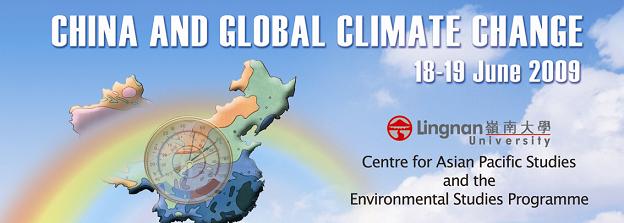
Event Title
Conference on China and Global Climate Change : Reconciling International Fairness and Protection of the Atmospheric Commons
Location
AM310, Lingnan University
Start Date
18-6-2009 4:00 PM
End Date
18-6-2009 5:00 PM
Language
English
Description
In any international negotiation on climate change close link among science, economics and politics can hardly be ignored. The argument for mitigation in case of long lived stock pollutants can never be rationally based on current growth level. It is a complex situation and any over simplifies approach will further complicate rather than lead to any positive solution. Competitiveness argument, border adjustment, trade barriers on emission intensive goods and services of Annex I countries can hardly be justified even at the current market share in trade, production, consumption. The best way to approach the problem can be to combine domestic and international actions judiciously. Need for transition to globally low carbon economy by the end of the century is least contested today. Common responsibility of attaining decarbonised growth path for global human welfare is uncontested but much contested is the differentiated responsibility design mechanism. Differentiated responsibility is a dynamic notion. So who should do how much and when, in dynamic context, is still an unresolved research question. But what is understood well is a fully functional global carbon market with global carbon price can provide a least cost solution with desired level of autonomy chosen by each country. Past attempts through CDM provide a small short term step towards that for flow of finance in niche investments and new technology, Sectoral Approach (SA) can provide a second level of stepping stone towards fully functional carbon market through financial flow into non niche market such as energy efficiency type of investment. China today is the leader among Non-Annex I countries in CDM and with first layer of capacity building it can be the natural leaders in SA.
Document Type
Presentation
Recommended Citation
Roy, J, Roy, M., & Roychowdhury, S. (2009). Sectoral approach: What is in it for the Chinese economy? In China and global climate change: Proceedings of the conference held at Lingnan University, Hong Kong, 18-19 June 2009 (pp. 284-295). Centre for Asian Pacific Studies and the Environmental Studies Programme, Lingnan University, Hong Kong.
Included in
Sectoral approach : what is in it for the Chinese economy?
AM310, Lingnan University
In any international negotiation on climate change close link among science, economics and politics can hardly be ignored. The argument for mitigation in case of long lived stock pollutants can never be rationally based on current growth level. It is a complex situation and any over simplifies approach will further complicate rather than lead to any positive solution. Competitiveness argument, border adjustment, trade barriers on emission intensive goods and services of Annex I countries can hardly be justified even at the current market share in trade, production, consumption. The best way to approach the problem can be to combine domestic and international actions judiciously. Need for transition to globally low carbon economy by the end of the century is least contested today. Common responsibility of attaining decarbonised growth path for global human welfare is uncontested but much contested is the differentiated responsibility design mechanism. Differentiated responsibility is a dynamic notion. So who should do how much and when, in dynamic context, is still an unresolved research question. But what is understood well is a fully functional global carbon market with global carbon price can provide a least cost solution with desired level of autonomy chosen by each country. Past attempts through CDM provide a small short term step towards that for flow of finance in niche investments and new technology, Sectoral Approach (SA) can provide a second level of stepping stone towards fully functional carbon market through financial flow into non niche market such as energy efficiency type of investment. China today is the leader among Non-Annex I countries in CDM and with first layer of capacity building it can be the natural leaders in SA.

